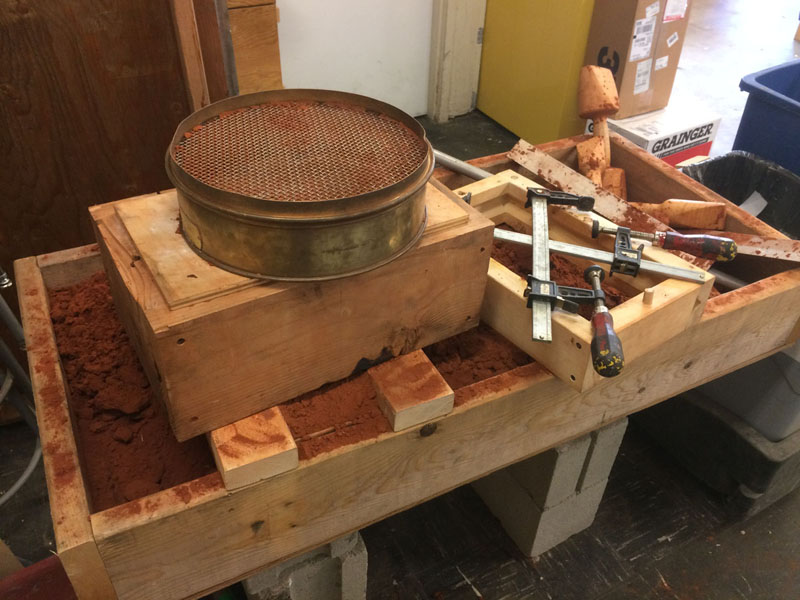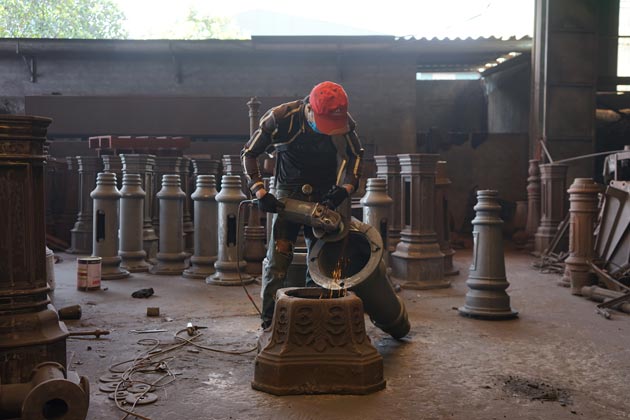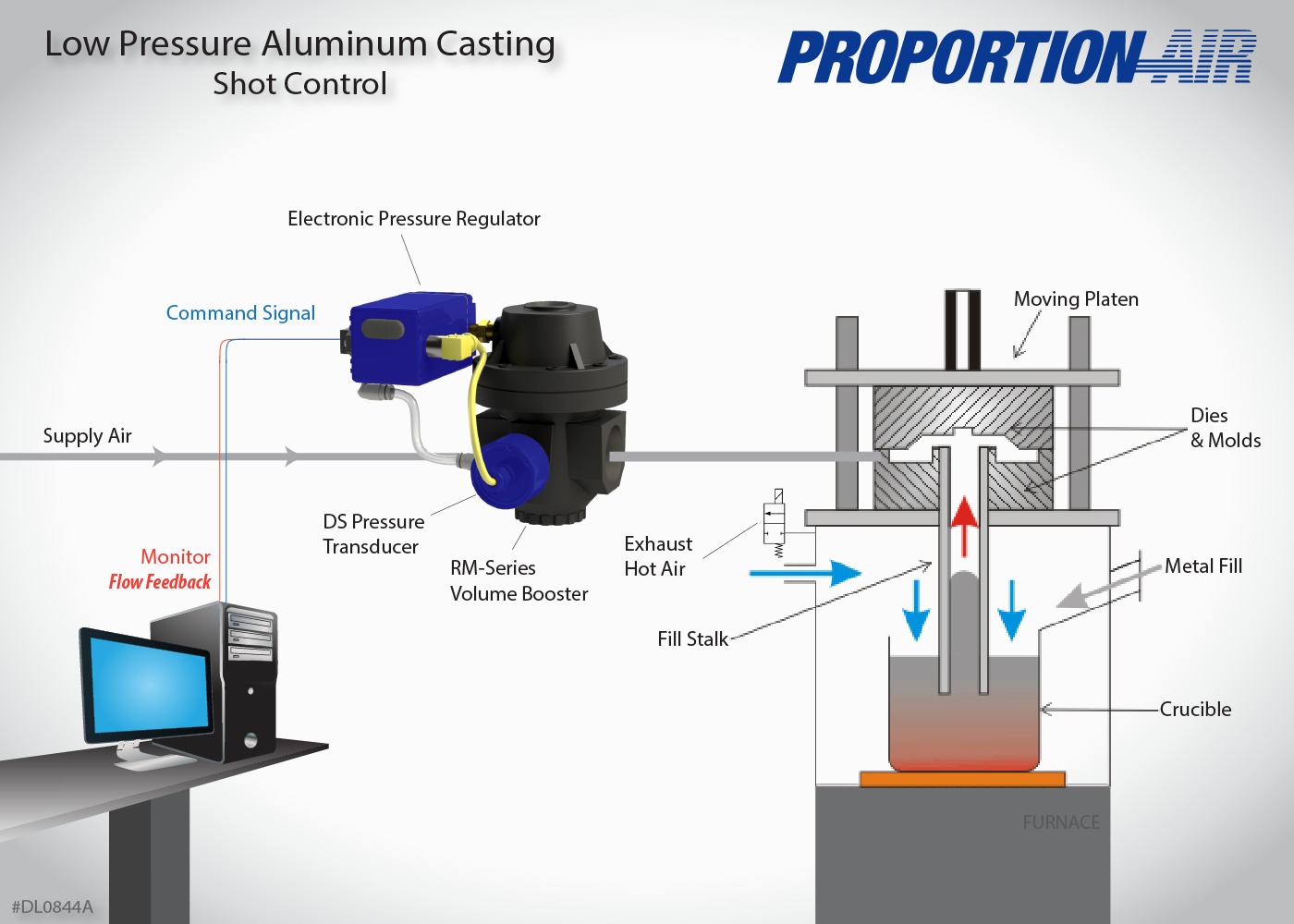Why Aluminum Foundry Wisconsin empowers casting businesses
Wiki Article
Exactly How Aluminum Foundry Adds To Developments in Aerospace Engineering
Aluminum foundries are essential to developments in aerospace engineering. They generate light-weight, high-strength elements that are crucial for modern airplane. Through advanced spreading methods, these factories create intricate geometries that enhance structural stability. Furthermore, the growth of remarkable Aluminum alloys sustains the sector's focus on gas efficiency and sustainability. Challenges stay in the production process. Comprehending these elements discloses the profound influence of Aluminum on aviation's future.The Relevance of Lightweight Materials in Aerospace Layout
As the aerospace sector proceeds to advance, the importance of light-weight products becomes increasingly noticeable. The demand for performance and sustainability drives engineers to prioritize using materials that decrease general weight without jeopardizing architectural integrity. Light-weight materials, particularly Aluminum, play a crucial role in enhancing fuel performance, improving haul capacity, and enhancing the general efficiency of airplane.Additionally, the combination of these products permits ingenious styles, making it possible for producers to produce more wind resistant forms that can withstand severe conditions. The reduction in weight not just lowers operational prices but additionally adds to a decreased environmental impact, lining up with international efforts toward sustainability in air travel.
Advanced Casting Techniques in Aluminum Foundries
Advanced casting techniques in Aluminum foundries play an important duty in aerospace design by enabling the production of lightweight and precise parts. Innovations in mold and mildew layout and accuracy casting procedures are necessary in accomplishing optimal performance and architectural integrity. In addition, the development of light-weight alloys boosts the total efficiency and efficiency of aerospace applications.Ingenious Mold Design
Cutting-edge mold style plays a vital role in the performance and efficiency of Aluminum factories, particularly within the aerospace field. By leveraging innovative materials and methods, modern-day molds can be engineered to endure high temperature levels and pressures, ensuring peak efficiency throughout the casting procedure. These styles commonly incorporate complicated geometries that enable the production of light-weight yet structurally audio components, important for aerospace applications. In addition, making use of computer-aided layout (CAD) software application facilitates accurate modeling, enabling shops to simulate and improve mold styles prior to physical production starts. This not just improves the top quality of cast parts yet likewise lowers waste and preparation, leading to significant price savings. On the whole, innovative mold and mildew layout is a keystone of development in Aluminum Foundry modern technology for aerospace design.Accuracy Casting Processes
The effectiveness of cutting-edge mold and mildew layouts seamlessly incorporates with accuracy casting procedures, which are vital for generating top quality Aluminum parts in aerospace design. These procedures, consisting of sand spreading, die spreading, and investment spreading, guarantee the development of intricate geometries with tight resistances. Advanced techniques like vacuum casting and stress pass away casting improve the honesty and surface area coating of the final items. Accuracy spreading lessens product waste while making the most of the mechanical residential or commercial properties of Aluminum, critical for aerospace applications. Additionally, employing real-time surveillance and advanced simulation devices during the casting procedure enables prompt modifications, causing improved quality control. Collectively, these precision casting processes placement Aluminum foundries at the center of aerospace advancement, sustaining the market's demand for dependability and performance.Light-weight Alloy Advancement
As aerospace engineers seek to improve gas effectiveness and performance, lightweight alloy advancement ends up being an important focus in Aluminum foundries. These shops use innovative casting strategies to develop alloys that supply superior strength-to-weight ratios. Developments in alloy make-up, consisting of the unification of elements like lithium and magnesium, enable the manufacturing of products that endure extreme conditions while minimizing general airplane weight. Strategies such as die casting and financial investment spreading help with the accuracy production of complex shapes, which are essential for aerospace applications. Furthermore, recurring research aims to maximize these alloys for improved mechanical residential properties and enhanced longevity. By focusing on lightweight alloy development, Aluminum shops substantially add to the development of aerospace design, paving the way for a lot more lasting and efficient aircraft designs.
Enhancing Architectural Stability Via Aluminum Components
Aluminum parts supply considerable benefits in improving structural honesty within aerospace design. Their light-weight nature adds to total performance while preserving strength, which is important for airplane efficiency. Additionally, the stress resistance properties of Aluminum assistance ensure the longevity and reliability of aerospace structures under numerous functional conditions.
Light-weight Product Advantages
While conventional materials commonly endanger weight for strength, using Aluminum components in aerospace design supplies substantial advantages in architectural honesty. Aluminum's lightweight nature adds to overall design performance, permitting even more structured aircraft that consume much less fuel, thereby enhancing sustainability. The product's excellent strength-to-weight proportion guarantees that elements preserve resilience without including unnecessary mass. This quality promotes boosted efficiency and dexterity in trip, along with enhanced payload capabilities. Furthermore, Aluminum's resistance to rust lengthens the life expectancy of aerospace structures, minimizing maintenance expenses and enhancing security. As manufacturers increasingly embrace Aluminum alloys, the aerospace sector experiences a transformative change towards much more effective and efficient engineering solutions that prioritize both performance and environmental obligation.Stress Resistance Characteristics
Although numerous materials have special properties, Aluminum's remarkable stress resistance stands out as a crucial consider boosting the structural stability of aerospace elements. This resistance plays an important role in making certain that airplane can stand up to different operational stress and anxieties, consisting of tiredness, influence, and ecological conditions. Aluminum alloys, especially engineered for aerospace applications, display high tensile toughness while keeping lightweight characteristics, allowing designers to make more reliable frameworks - Aluminum Foundry. In addition, the capability of Aluminum to endure cyclic loading without considerable deformation adds to the longevity and integrity of aerospace parts. As improvements proceed in Aluminum Foundry strategies, the development of stress-resistant Aluminum components assures more renovations in efficiency, security, and effectiveness across the aerospace market, solidifying Aluminum's duty as a preferred product in contemporary engineeringFuel Effectiveness Improvements Driven by Aluminum Innovations
As the aerospace market seeks to enhance gas performance, ingenious uses Aluminum have become a vital service. Aluminum's lightweight nature especially minimizes airplane weight, permitting for lower fuel usage during flight. This decrease in weight is vital, as even little decreases can lead to substantial improvements in general fuel economy.Advanced Aluminum alloys, created for improved toughness and durability, make it possible for makers to create parts that keep architectural honesty while lessening mass - Aluminum Foundry. Additionally, the integration of Aluminum in airframes and engine parts promotes enhanced the rules of aerodynamics, adding to minimized drag and enhanced effectiveness
The adoption of Aluminum in aerospace not just satisfies the need for fuel-efficient style yet also straightens with regulative stress for reduced discharges. As these advancements proceed to progress, they play a significant function in establishing new standards for fuel effectiveness, ensuring that the aerospace market can fulfill growing environmental and financial difficulties.

The Function of Aluminum in Sustainable Aviation Practices
The enhancing emphasis on lasting aeronautics practices has placed Aluminum as a vital material in the pursuit for greener airplane layout. Recognized for its lightweight homes, Aluminum substantially lowers aircraft weight, resulting in reduced fuel usage and discharges. Its recyclability even more link improves its sustainability profile, as Aluminum can be recycled indefinitely without loss of quality. This characteristic supports a round economy within the aeronautics sector, minimizing waste and resource depletion.Additionally, innovations in Aluminum alloys have boosted their stamina and corrosion resistance, allowing for longer service life and reduced upkeep needs. These advancements help with the development of a lot more efficient aircraft frameworks, contributing to total sustainability efforts. Furthermore, Aluminum's thermal conductivity plays a critical function in energy-efficient styles, boosting systems such as warm exchangers. Jointly, these attributes emphasize Aluminum's pivotal duty in progressing sustainable aeronautics, lining up with international initiatives focused on reducing the ecological impact of air travel.
Obstacles Faced by Aluminum Foundries in Aerospace Production
While Aluminum shops play a necessary role in aerospace manufacturing, they deal with considerable obstacles that can influence production effectiveness and high quality. check here One significant challenge is the rigid quality assurance requirements needed in the aerospace sector. Any issue can compromise safety and efficiency, necessitating extensive evaluation procedures that extend production timelines. Furthermore, factories frequently contend with changing basic material expenses, which can influence rates and success. The complexity of Aluminum alloys utilized in aerospace applications additional makes complex the production procedure, as accurate formulas are vital for attaining desired mechanical buildings. Skilled labor lacks impede the capability to keep high-grade manufacturing degrees. Ecological regulations impose constraints on exhausts and waste administration, calling for factories to invest in lasting practices, which can be cost-prohibitive. These factors jointly produce a landscape where Aluminum foundries must continually adjust to satisfy the developing needs of aerospace production while ensuring security and compliance.Future Trends in Aluminum Applications for Aerospace Design
With advancements in technology and raising demands for efficiency, the future of Aluminum applications in aerospace design is poised for substantial change. The integration of innovative Aluminum alloys and compounds is anticipated to boost strength-to-weight proportions, causing more fuel-efficient airplane designs. Additionally, developments in additive production methods will certainly enable the production of complicated Aluminum structures that were previously difficult, optimizing efficiency and reducing waste.
Sustainable practices will certainly play a necessary role, with a growing emphasis on recycling Aluminum to reduce environmental impact. The aerospace market is likely to welcome smarter producing processes, such as automation and expert system, ensuring better and accuracy in Aluminum parts. Collaborations between Aluminum foundries and aerospace business will cultivate study and development, leading the means for brand-new applications that fulfill the stringent needs of modern aerospace engineering. Overall, the future looks promising for Aluminum's role fit the skies
Regularly Asked Concerns
What Are the Environmental Impacts of Aluminum Production in Aerospace?
The environmental influences of Aluminum manufacturing in aerospace consist of considerable energy consumption, greenhouse gas emissions, and environment disturbance. Furthermore, mining procedures can cause dirt deterioration and water contamination, raising issues concerning sustainability and environmental balance.Exactly How Does Aluminum Compare to Various Other Materials in Aerospace Applications?
Aluminum supplies an unique combination her latest blog of lightweight residential properties, corrosion resistance, and cost-effectiveness contrasted to other products. Its high strength-to-weight ratio makes it specifically helpful for aerospace applications, enhancing fuel efficiency and overall performance in aircraft layout.What Credentials Do Aluminum Foundry Workers Demand for Aerospace Projects?
Aluminum Foundry workers require specific training in metallurgy and spreading methods, together with knowledge of aerospace market standards. Certifications in top quality control and security methods are likewise important to assure conformity with stringent aerospace job needs.Are There Any Type Of Safety And Security Worry About Using Aluminum in Aerospace Engineering?
Safety worries relating to Aluminum in aerospace design include vulnerability to stress, fatigue, and rust cracks. Correct treatment and alloy option are necessary to minimize these threats, ensuring structural honesty and general safety in aerospace applications.Exactly How Does Aluminum Recycling Benefit the Aerospace Sector?
Aluminum reusing greatly benefits the aerospace market by lowering product costs, decreasing environmental impact, and conserving energy. This sustainable practice enhances the market's performance while advertising using light-weight, high-performance parts in airplane production.Advanced casting methods in Aluminum factories play a crucial role in aerospace engineering by enabling the manufacturing of lightweight and accurate parts. Cutting-edge mold and mildew layout plays a vital function in the efficiency and efficiency of Aluminum factories, especially within the aerospace sector. As aerospace engineers seek to boost gas effectiveness and performance, light-weight alloy development comes to be a crucial emphasis in Aluminum foundries. Aluminum alloys, specifically crafted for aerospace applications, display high tensile toughness while preserving lightweight characteristics, making it possible for engineers to design a lot more effective frameworks. Partnerships in between Aluminum foundries and aerospace business will certainly foster research study and growth, leading the means for new applications that satisfy the rigorous demands of modern aerospace design.
Report this wiki page